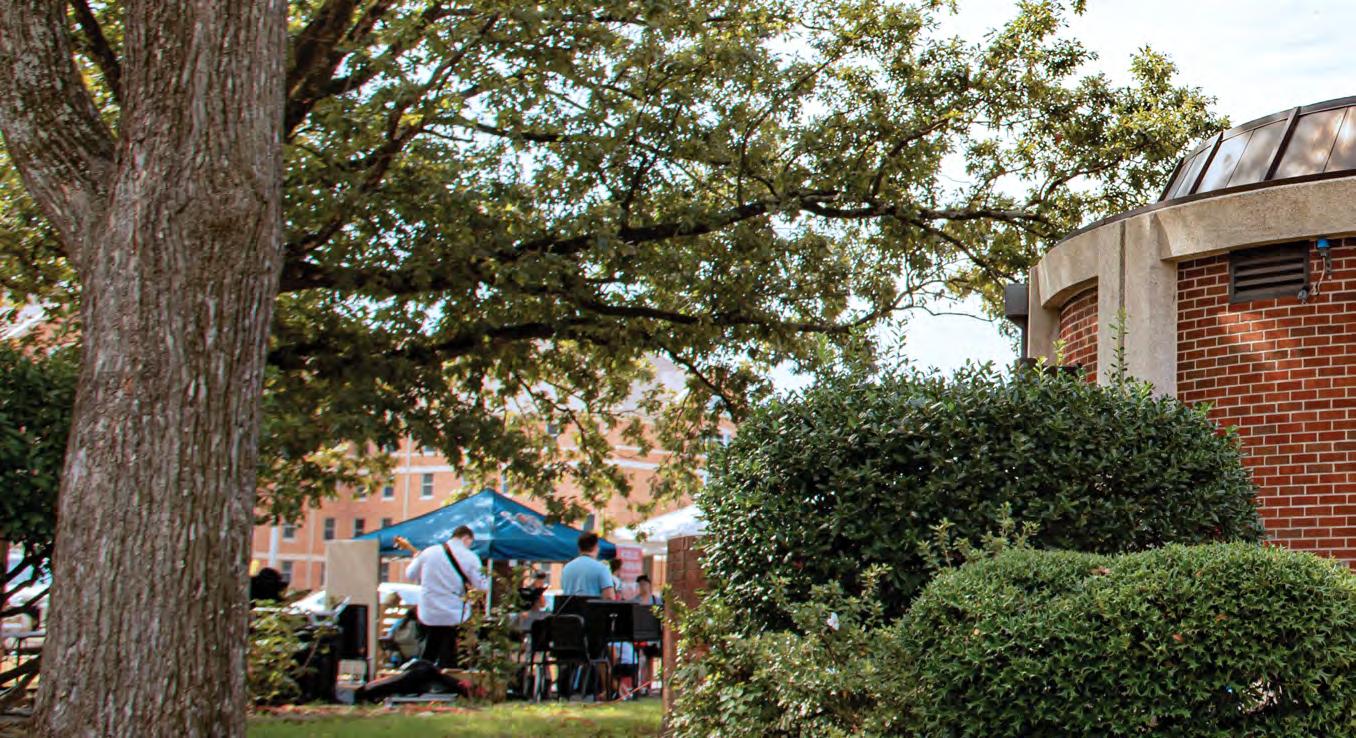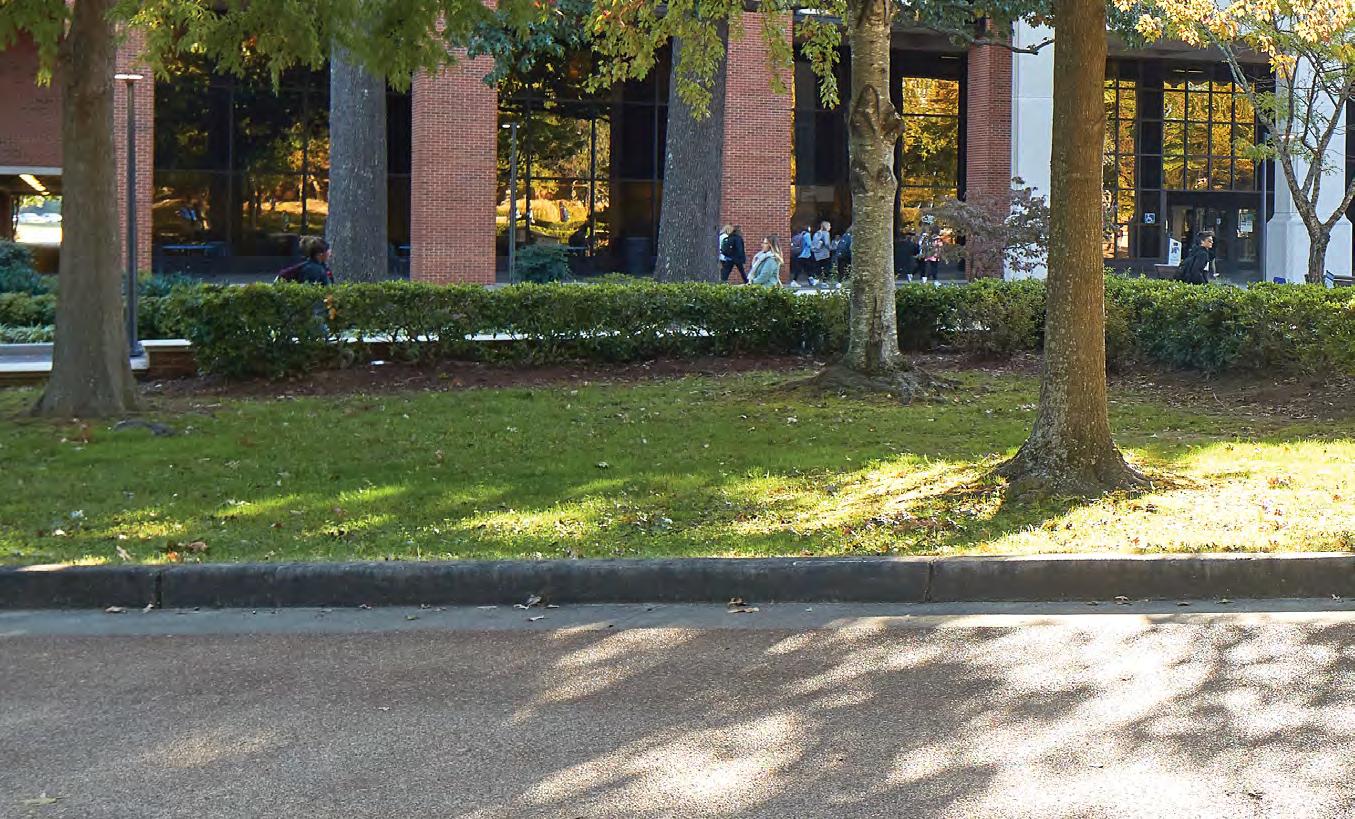
5 minute read
Central to the Arts
CENTRAL TO
The Central Avenue Arts Corridor development project envisions an exciting future for creative work on campus and beyond
WITH THE LAUNCH OF THE CENTRAL TO THE ARTS HUB on Oct. 5, 2019, the College of Communication and Fine Arts took the first step toward reimagining the stretch of land between Patterson Street and Zach Curlin Street as the Central Avenue Arts Corridor, an all-new civic centerpiece and destination for creative minds in the Greater Memphis Area. by Casey Hilder
“The Central Avenue Arts Corridor is something we’ve been thinking about for a long time,” said Dr. Anne Hogan, dean of the College of Communication and Fine Arts. “It’s a designation for the northern end of campus that has become known for its fantastic arts, music and theater facilities. Now, we want to make it something more and invite the rest of the city in to see what we’re up to.”
The inaugural event of this rebranding effort came when the former Visitor Information Center at the corner of Patterson Street and Central Avenue was transformed into The Central to the Arts Hub, a gateway to the UofM art scene that grants student artists an ongoing opportunity to display their work year-round in a pop-up gallery format. According to Hogan, this was also the first step toward making the artistic endeavors of the University of Memphis more visible to the public at large.
“The Arts Hub is significant in terms of giving our students entrepreneurial experience and an opportunity to sell their work while considering creative production and how it fits into the local economy,” said Richard Lou, chair of the UofM Department of Art. “It will also serve as a visual marker that the visitor is entering a creative cultural landscape that encompasses everything related to the visual arts, film, theatre, dance and music.”
THE ARTS


Handcrafted ceramics from UofM artisans were available for viewing at the Central to the Arts Hub launch event this past October. Dean Anne Hogan hopes the new hub will soon provide a permanent place to purchase student artwork.


Hogan, who came onboard with the College of Communication and Fine Arts three years ago, said her earliest observations of Memphis related to the way that the arts served as a catalyst for the growth of some neighborhoods.
“You can see it in places like downtown, Broad Avenue and the Cooper-Young district,” she said. “With the resources we already have on campus, coupled with the new activity going on with the revitalized Highland Strip, we really feel as if this can be a new arts destination venue for people in Memphis.”
In addition to the new hub, the Scheidt Family Music Center, a $40 million building that was announced in late 2017, will serve as an additional anchor point for the Central Avenue Arts Corridor. With more than twice as many seats as Harris Concert
Hall and a bevy of high-tech resources, the 90,000-square foot Scheidt Family Music Center will offer one of the largest and most elaborate performance spaces on campus.
“The importance of the music building and how it fits into the Central Avenue Arts Corridor really can’t be understated,” Hogan said. “While we have a number of wonderful facilities on this side of campus, you can’t really see those from Central Avenue. We hope that the new Scheidt Family Music Center helps with some of that visibility and lets people know that this space is where the community can come together and focus on the arts.”
While the new music center is slated to open its doors in 2021, a range of existing campus facilities will serve as the backbone of the Central Avenue Arts Corridor, including the Martha and Robert Fogelman Galleries of

Contemporary Art, the University of Memphis Art Museum, the Institute of Egyptian Art and Archaeology, Mainstage Theatre, Harris Concert Hall and several venues for public lectures from across all departments.
“This development will obviously provide a chance for us to showcase the resources of the College of Communication and Fine Arts, but it’s also part of the vision of the University to have a larger impact on the city as a whole,” Hogan said. “One of the bigger things to keep in mind here is that our students — no matter what college they’re in or what they study — are welcome to come and attend any of the theatre performances, art shows, public lectures or concerts that they please.”
The Central Avenue Arts Corridor represents a true interdepartmental collaboration across the CCFA in the form of contributions such as the Department of Architecture’s mock-up

Photography by Casey Hilder

sketches for possible developments around the new hub and the Department of Art’s proposals for public art around the north side of campus.
Hogan credits the project’s steady progress to UofM provost Dr. Thomas Nenon and President Dr. M. David Rudd, the Scheidt family, supporters of the new music center and donors to the Art Museum of the University of Memphis, the Fogelman Galleries and every department across the College of Communication and Fine Arts.
“They’re the ones investing in the resources that we want to promote to the city so that it benefits the wider community as much as possible,” Hogan said. “And the more we can have an exchange with the wider community, the more vibrant the environment becomes for our students, which in turn gives them more opportunities to showcase what they do best.”










